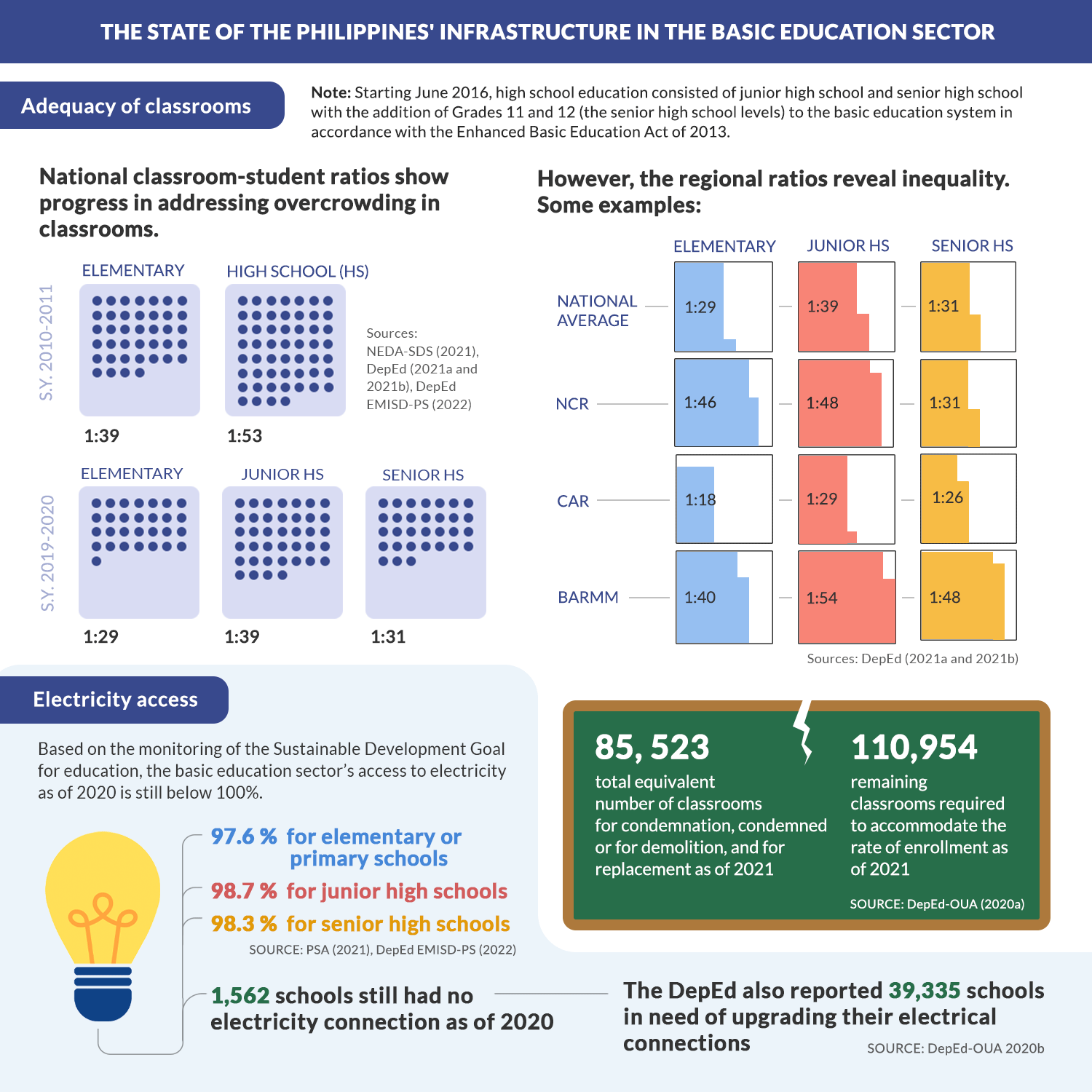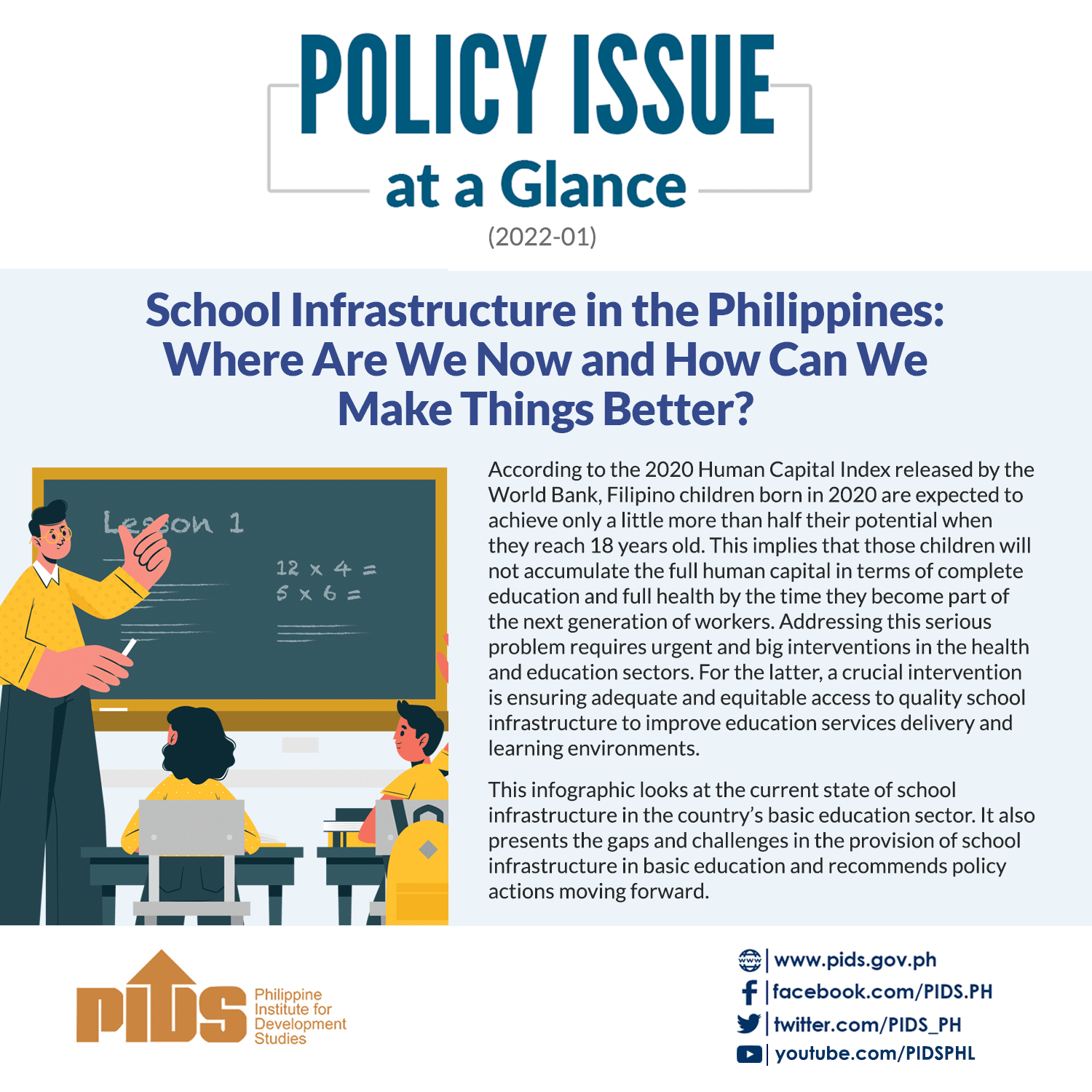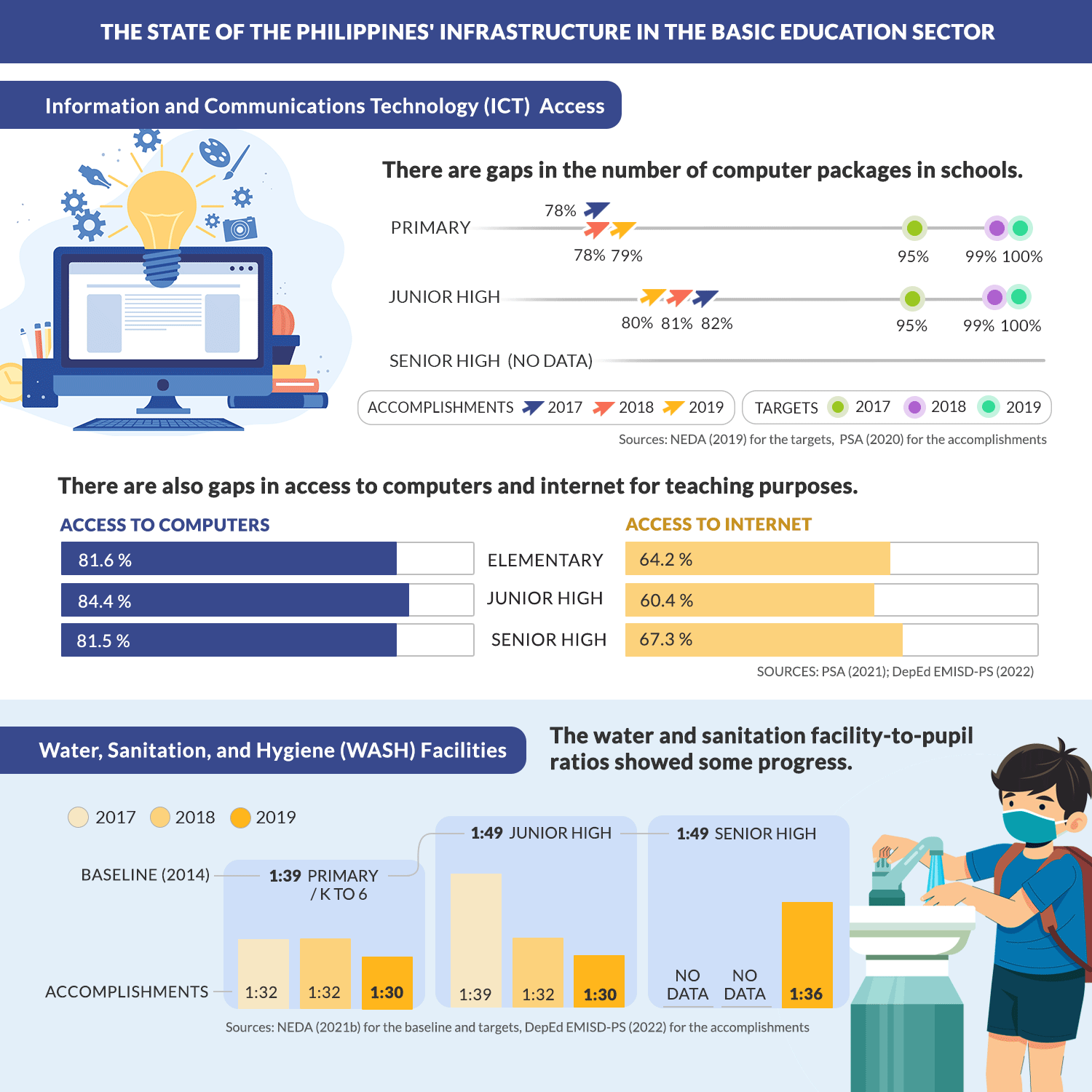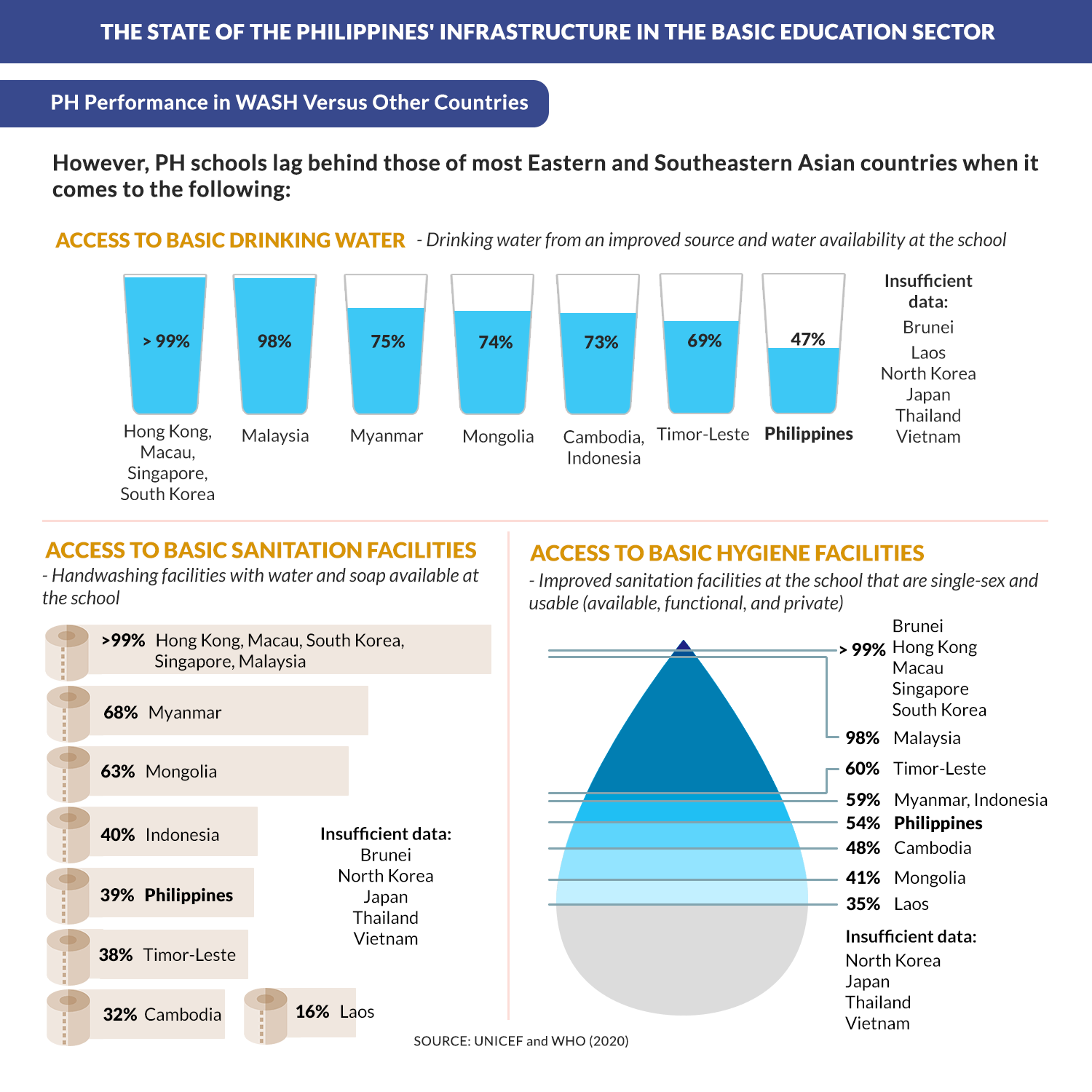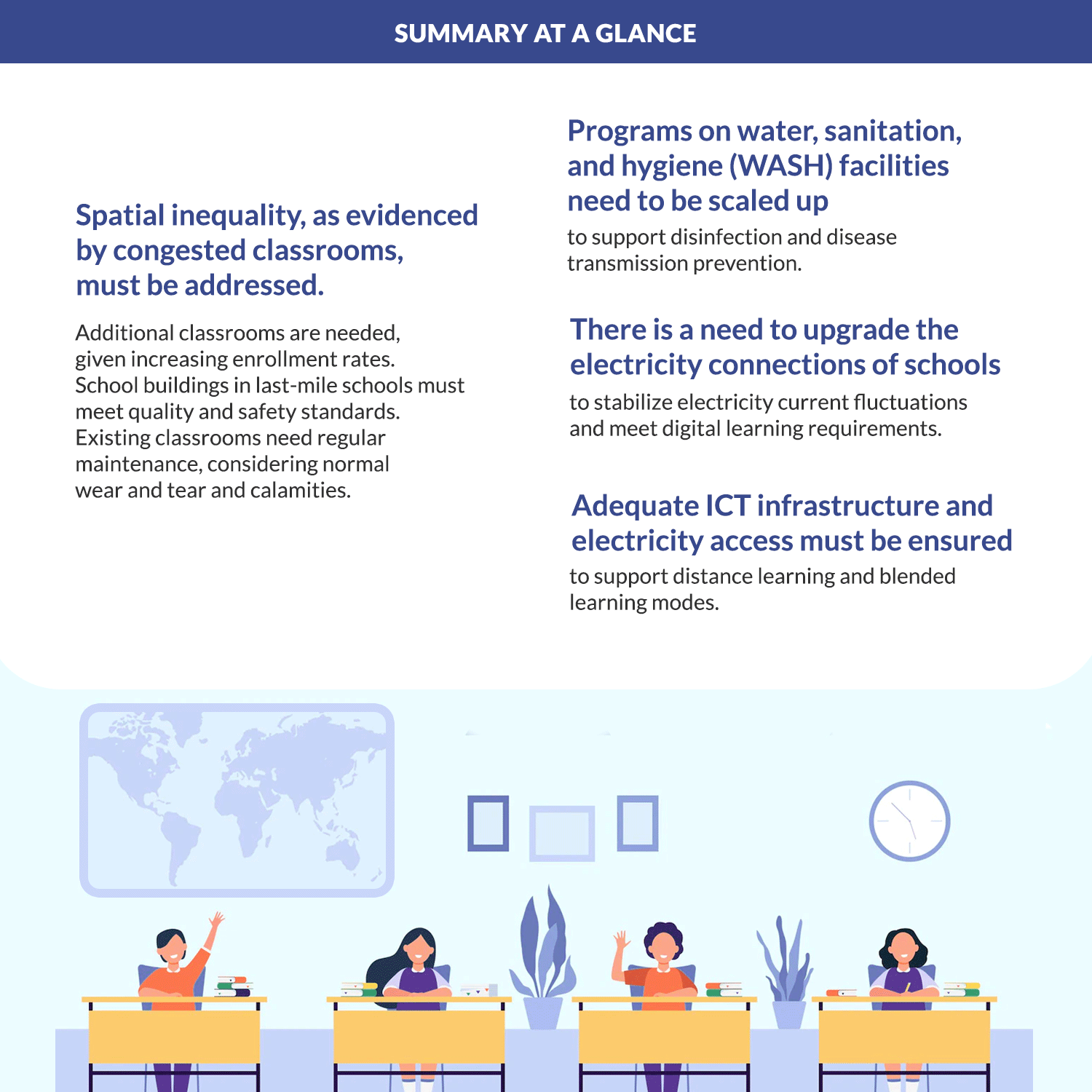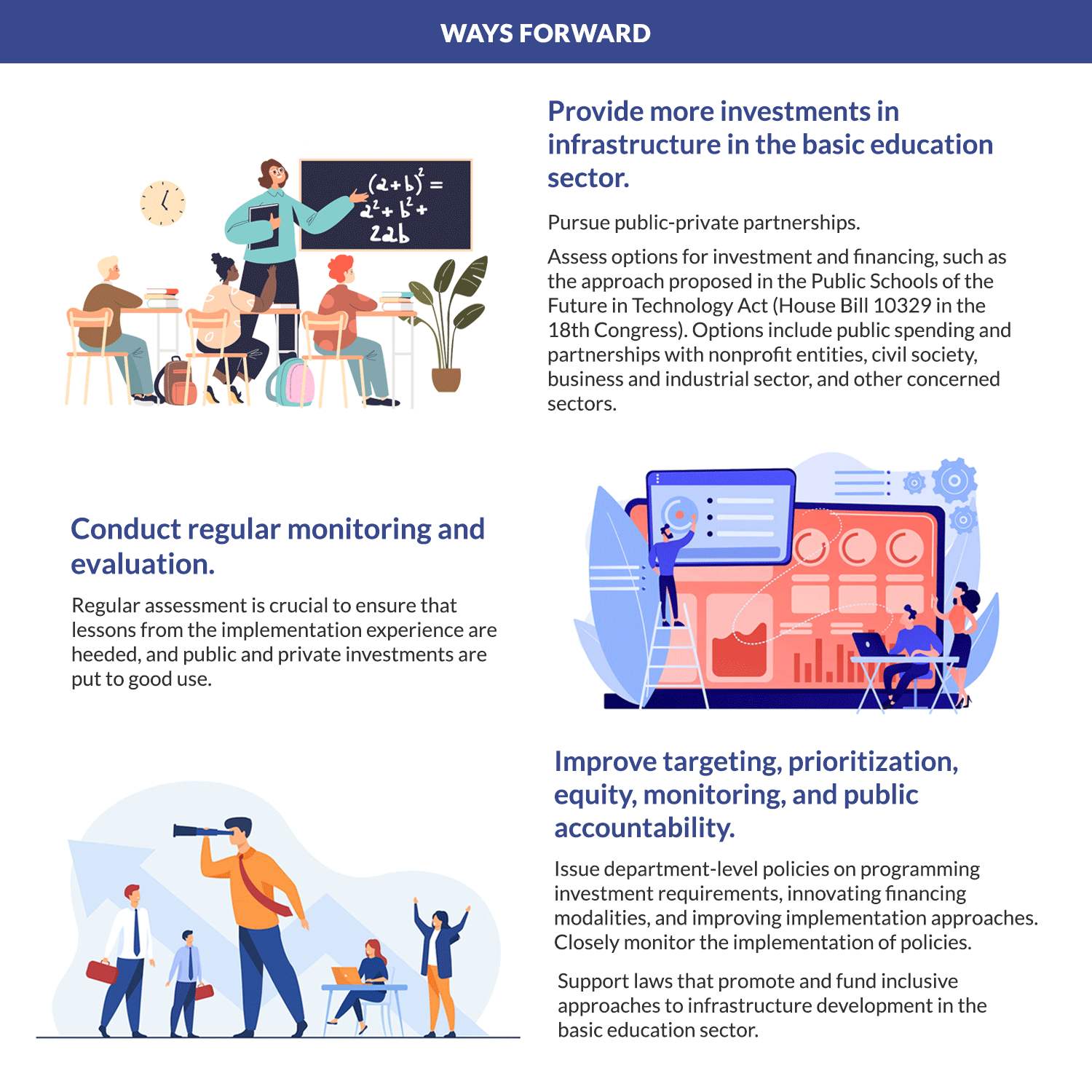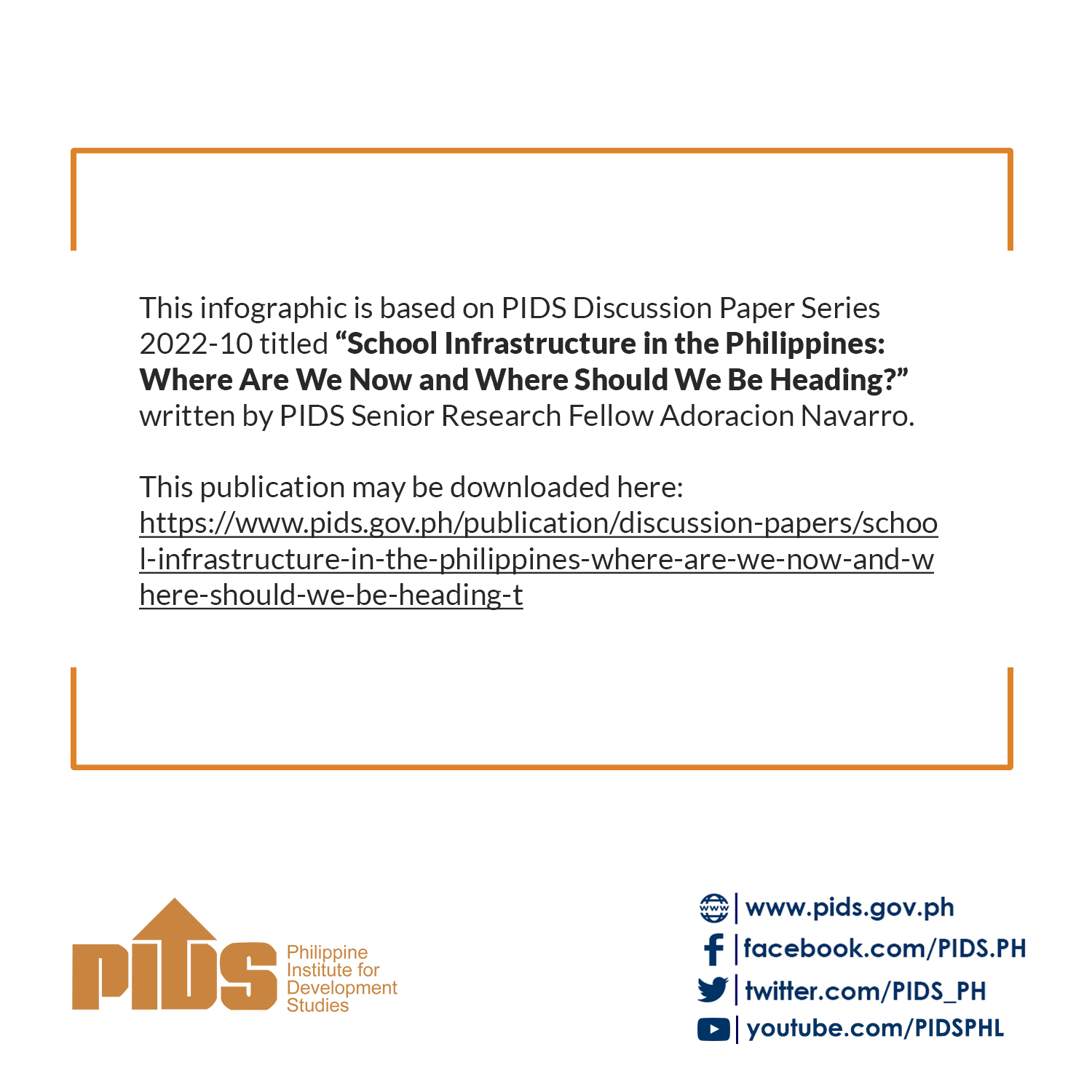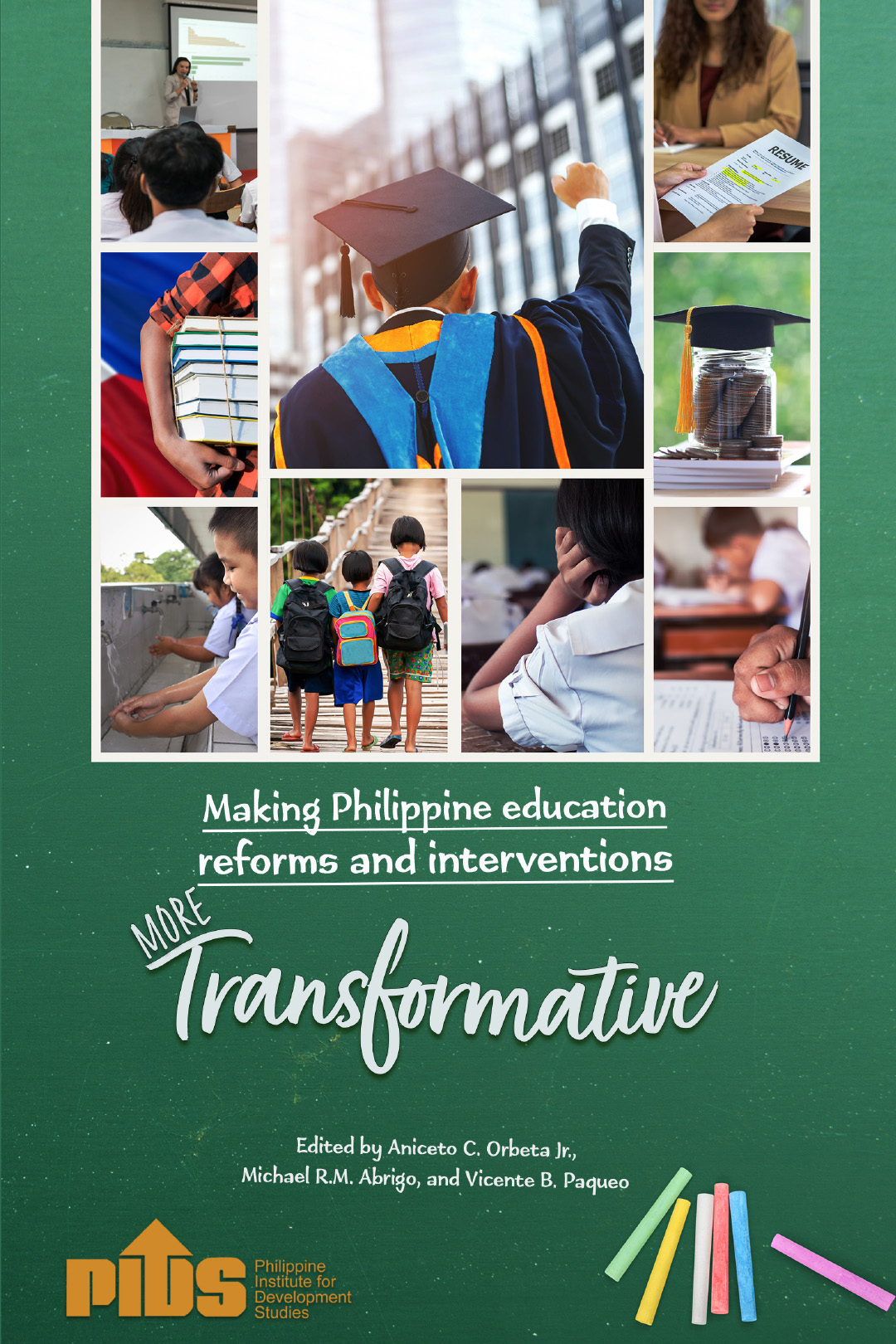
According to the 2020 Human Capital Index released by the World Bank, Filipino children born in 2020 are expected to achieve only a little more than half their potential when they reach 18 years old. This implies that those children will not accumulate the full human capital in terms of complete education and full health by the time they become part of the next generation of workers. Addressing this serious problem requires urgent and big interventions in the health and education sectors. For the latter, a crucial intervention is ensuring adequate and equitable access to quality school infrastructure to improve education services delivery and learning environments.
This infographic looks at the current state of school infrastructure in the country’s basic education sector. It also presents the gaps and challenges in the provision of school infrastructure in basic education and recommends policy actions moving forward.
The information presented here is based on PIDS Discussion Paper Series 2022-10 titled “School Infrastructure in the Philippines: Where Are We Now and Where Should We Be Heading?” written by PIDS Senior Research Fellow Adoracion Navarro. This publication may be downloaded here: https://www.pids.gov.ph/publication/discussion-papers/school-infrastructure-in-the-philippines-where-are-we-now-and-where-should-we-be-heading-t
